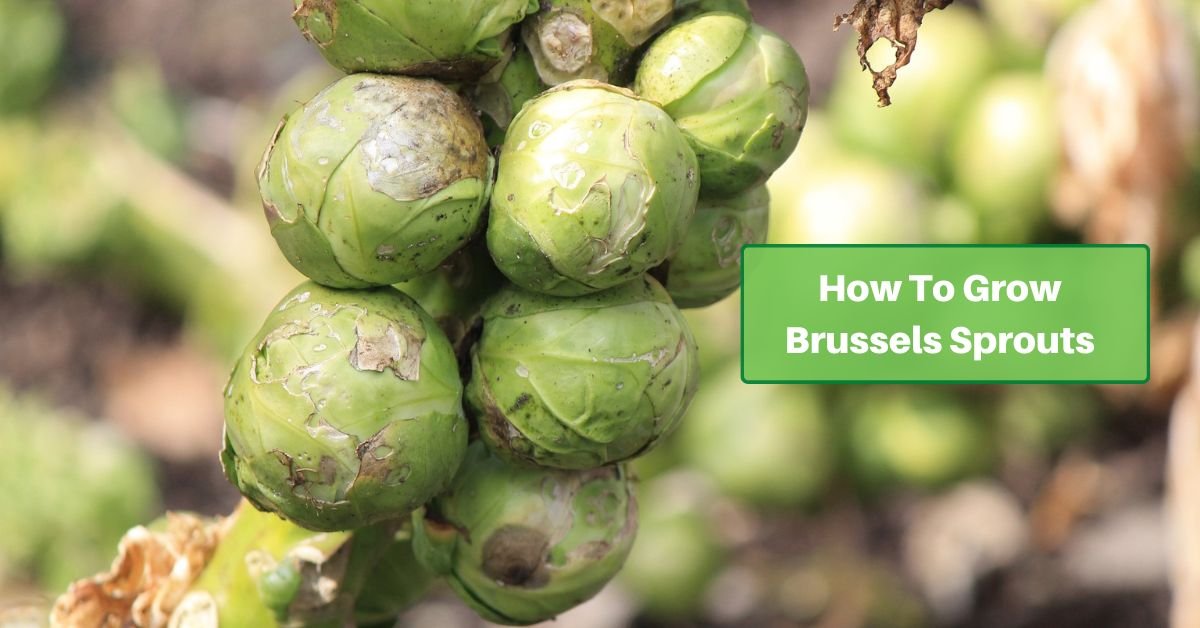Brussels sprouts, with their tiny cabbage-like heads, are a marvelous addition to any garden. Growing these nutritious and flavorful vegetables at home can be a rewarding experience.
In this article, we will take you through the entire process of cultivating Brussels sprouts, from planting the seeds to harvesting the bountiful harvest.
Selecting the Right Variety
The first step in successfully growing Brussels sprouts is selecting the right variety. Varieties like ‘Long Island Improved’ or ‘Jade Cross’ are well-suited for home gardens due to their compact size and adaptability. Take into account your local climate and choose a variety that thrives in your region.
Preparing the Soil
Brussels sprouts thrive in nutrient-rich, well-drained soil. They prefer slightly acidic to slightly alkaline soil with a pH level between 6.0 and 7.5. Test your soil’s pH and make necessary adjustments.
Add organic matter, such as compost or well-rotted manure, into the soil to improve fertility and water retention.
Planting Brussels Sprouts
Brussels sprouts can be grown from seeds or transplants.
If you’re starting from seeds, begin indoors 8-10 weeks before your last expected frost date. Sow the seeds in trays or pots, keeping them at a depth of 1/4 inch.
Once they have developed several leaves and the danger of frost has passed, transplant them to the garden. Space them 18-24 inches apart in rows that are 30 inches apart.
Order Brussels Sprouts Seeds Online
Sunlight and Location
Brussels sprouts require full sun, which means they need at least 6-8 hours of direct sunlight each day. Ensure your garden plot is in a location that receives ample sunlight, as this is crucial for healthy growth and abundant sprout production.
Watering and Fertilizing
Proper watering is another necessity for Brussels sprouts. Keep the soil consistently moist, aiming for about 1-1.5 inches of water per week. Mulching is a good idea as it helps retain moisture and suppress weeds.
Brussels sprouts are heavy feeders, so regular fertilization is necessary. Before planting, work a balanced, slow-release fertilizer into the soil. You can also side-dress with a nitrogen-rich fertilizer when the plants are about 6-8 inches tall. Remember to follow the recommended dosage on the fertilizer package to avoid overfeeding.
Thinning and Care
Once your Brussels sprouts reach a height of about 4-6 inches, it’s essential to thin them. Remove the weakest seedlings, leaving the strongest ones spaced at least 18-24 inches apart. This spacing allows room for the mature plants to develop their robust stems and sprouts.
Pest and disease management is critical for Brussels sprouts. Common pests include aphids, cabbage worms, and snails. Regularly inspect your plants and address any pest issues promptly.
You can use organic pest control methods or introduce beneficial insects like ladybugs to help control pests naturally.
Caring for Your Brussels Sprouts
Brussels sprouts require some specific care to ensure healthy growth:
- Support: As the plants grow, they may become top-heavy with the developing sprouts. Providing support, such as stakes or cages, can prevent them from toppling over.
- Pinching: To encourage the development of larger sprouts, consider pinching off the small leaves that grow in the leaf axils (where the leaves meet the stem). This diverts more energy into the sprouts.
- Top Removal: When your Brussels sprouts reach a height of about 20 inches, consider removing the top few inches of the main stem. This will encourage the sprouts to mature evenly.
Harvesting Brussels Sprouts
Harvesting Brussels sprouts is a delightful culmination of your hard work. They are ready for harvest when they have reached a suitable size, normally around 1-2 inches in diameter. Begin by picking the lowest sprouts on the plant and work your way up the stem. Use a sharp knife to cut the sprouts just above the leaf.
Harvest Brussels sprouts before they become too large or develop a bitter taste. The smaller, more compact ones are generally the most tender and flavorful. Depending on the variety and your climate, you can usually begin harvesting in late summer or early fall and continue throughout the season.
Post-Harvest Care
After harvesting, your Brussels sprout plants can continue to produce if the weather remains mild. Remove any yellowing or damaged leaves to encourage new sprout development. If the weather turns cold, consider covering your plants with a row cover to extend the harvest season.
Growing Brussels sprouts in your garden requires patience and attention, but the rewards are well worth it. Start with the right variety and preparation, offer proper care, and harvest the sprouts at the right time so you can enjoy a bountiful harvest of these tiny veggies. So, roll up your sleeves, start planting, and get ready to savor the flavors of your homegrown Brussels sprouts.










